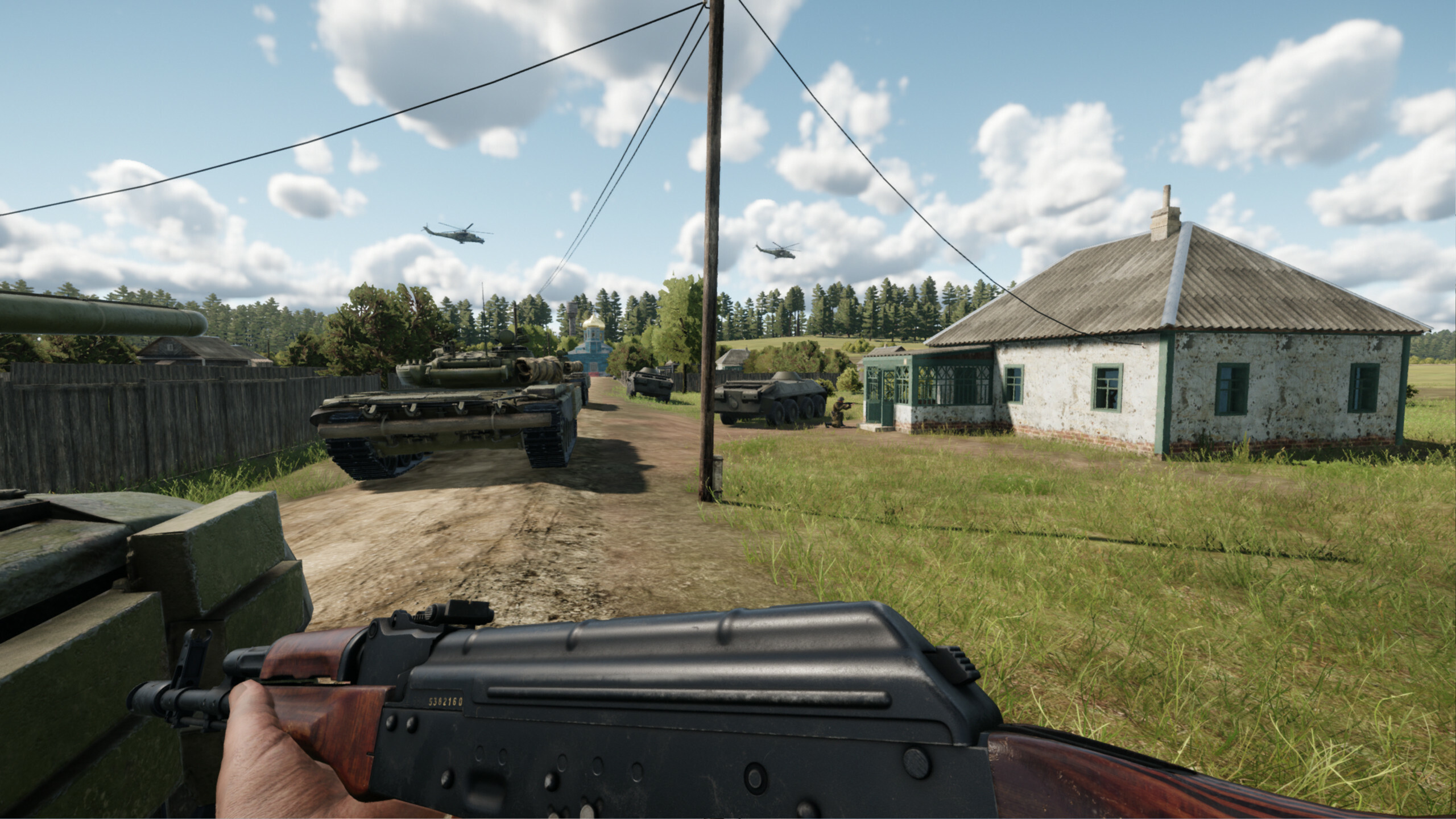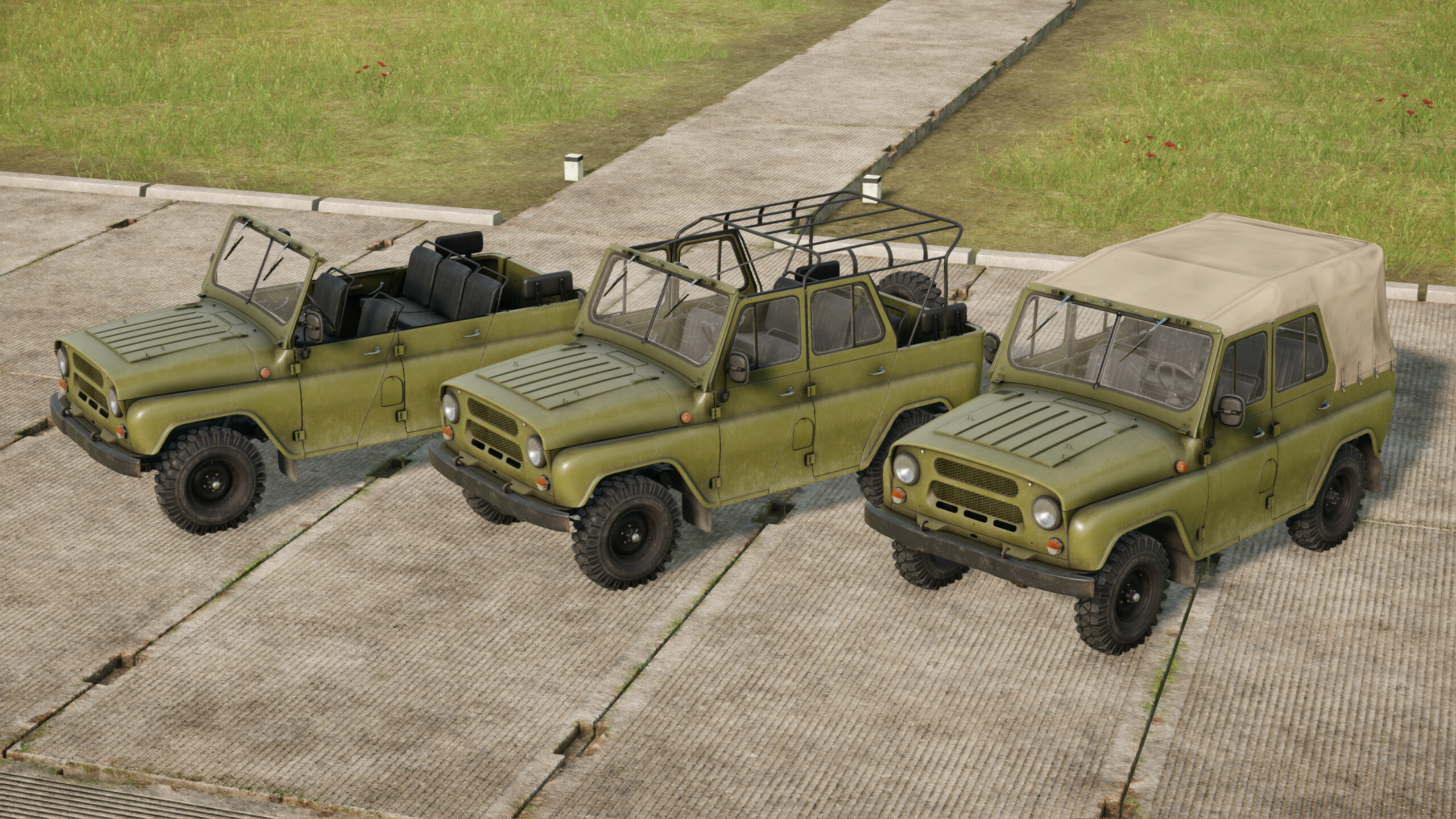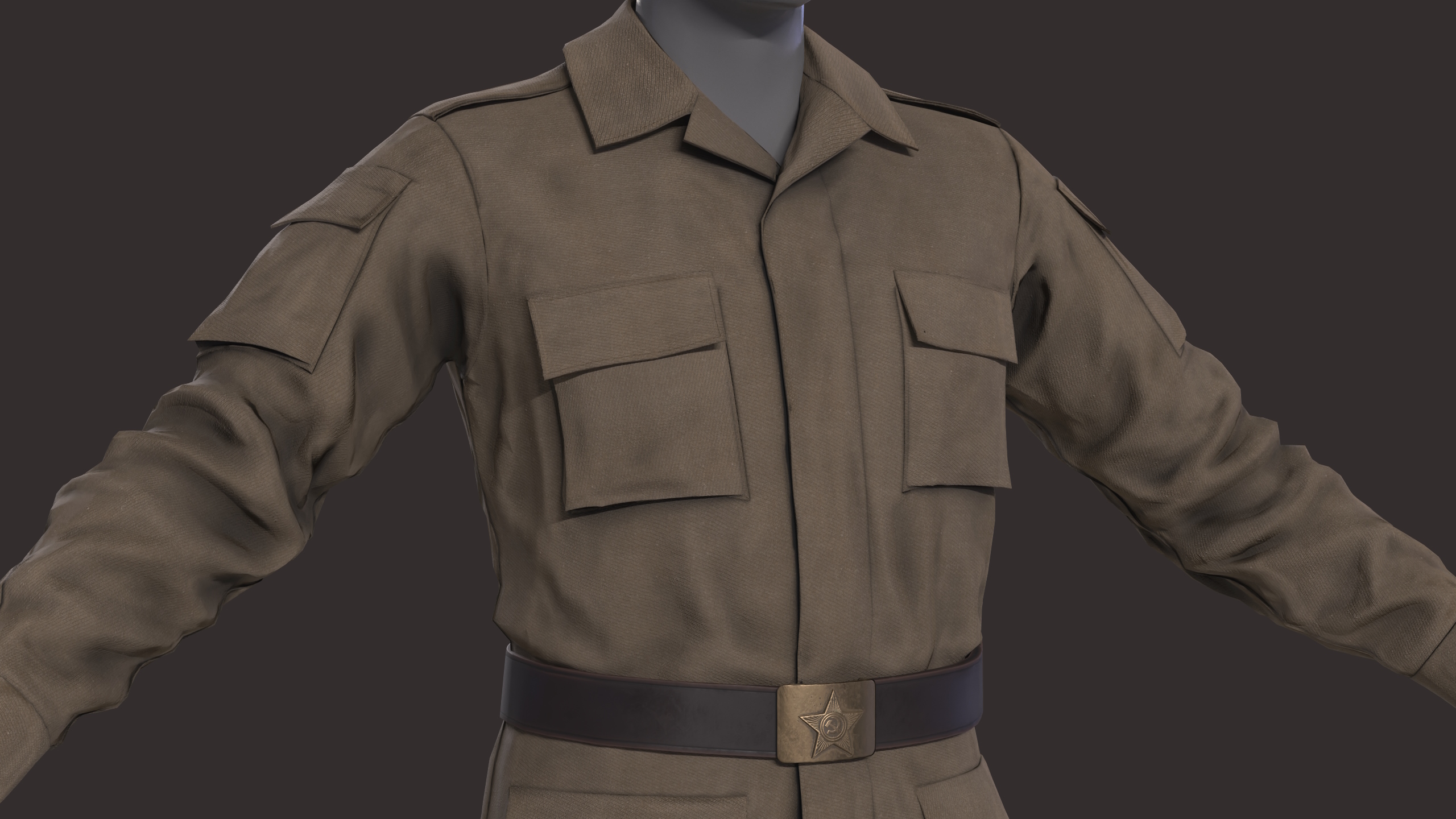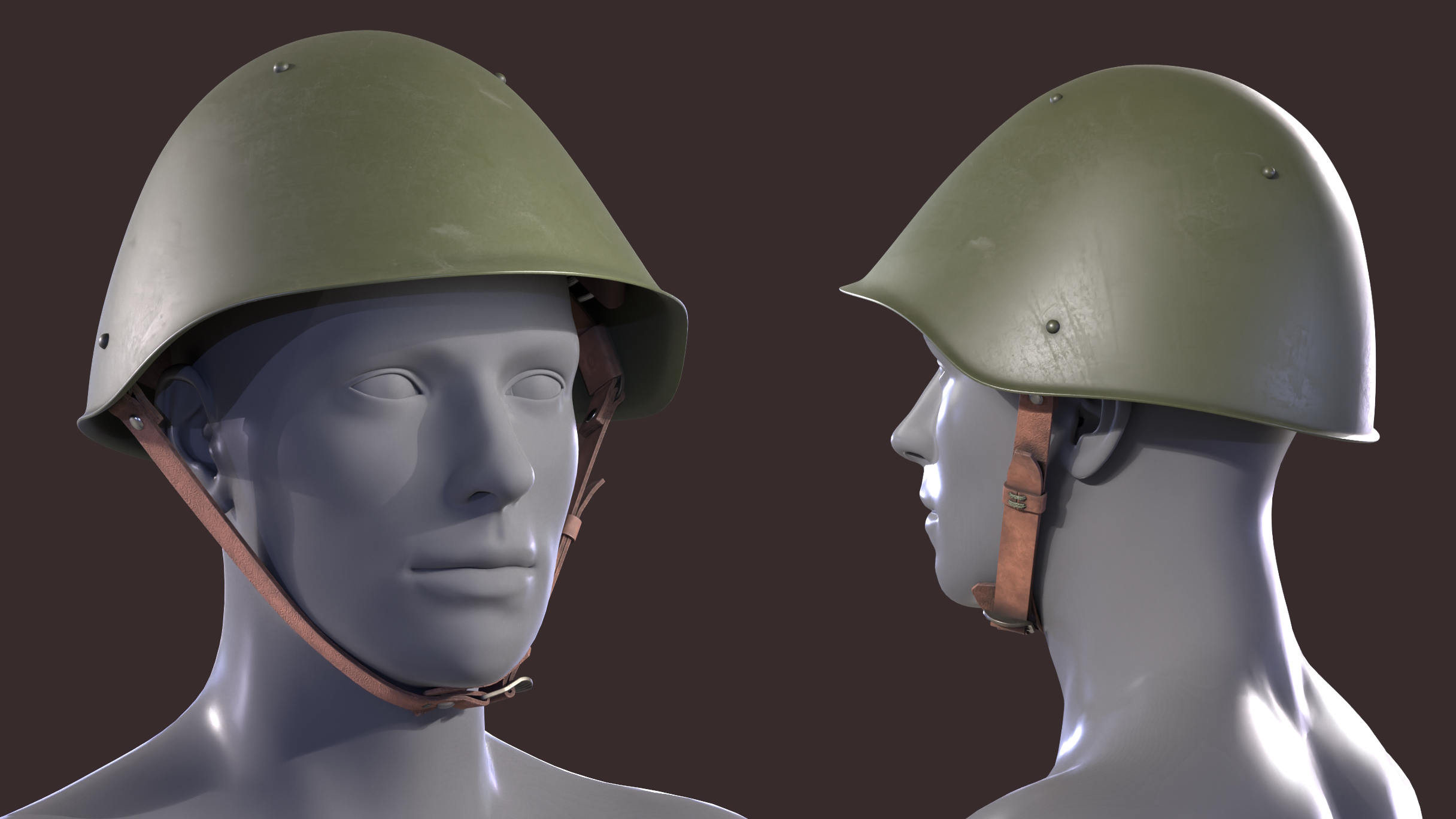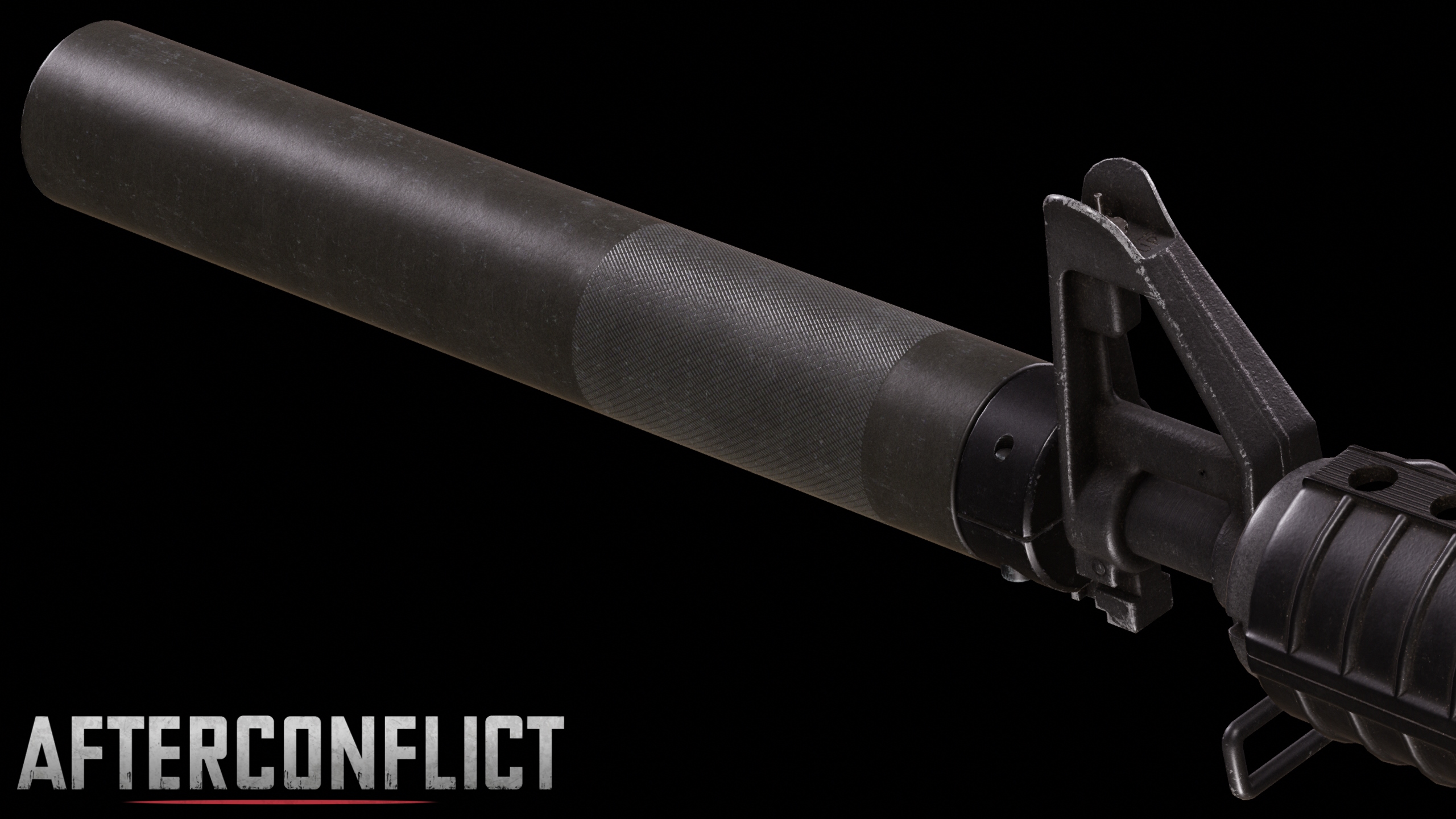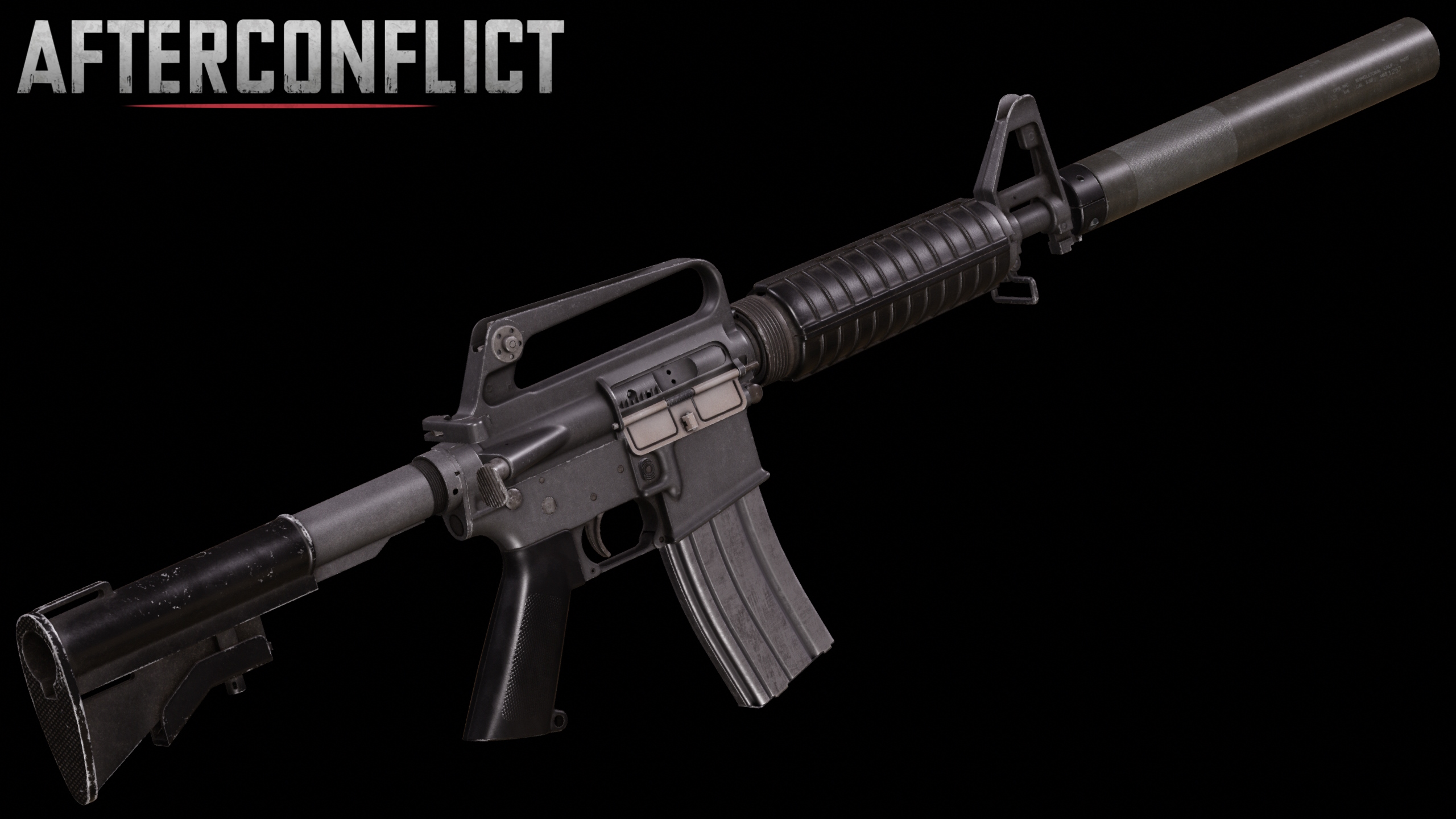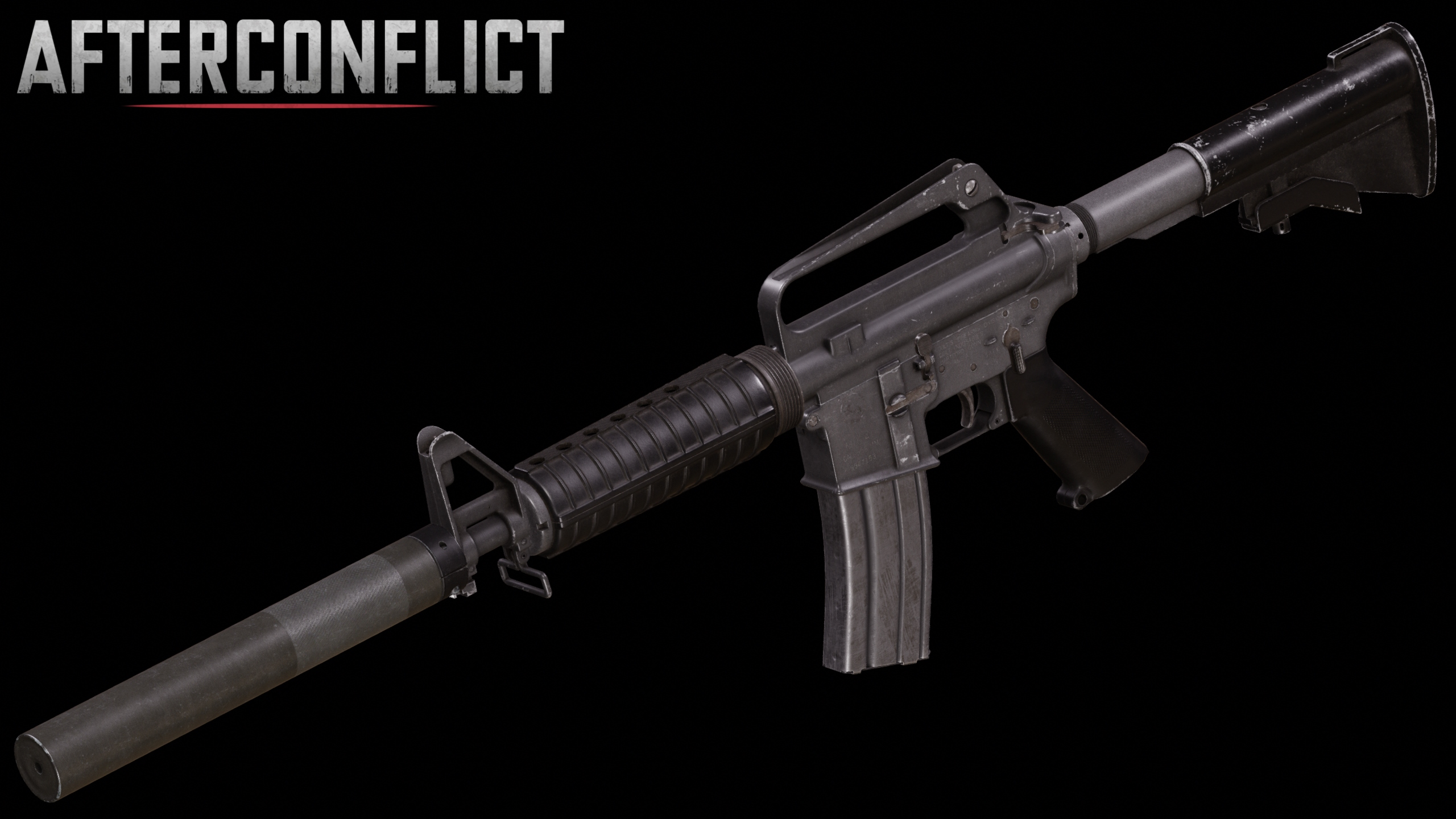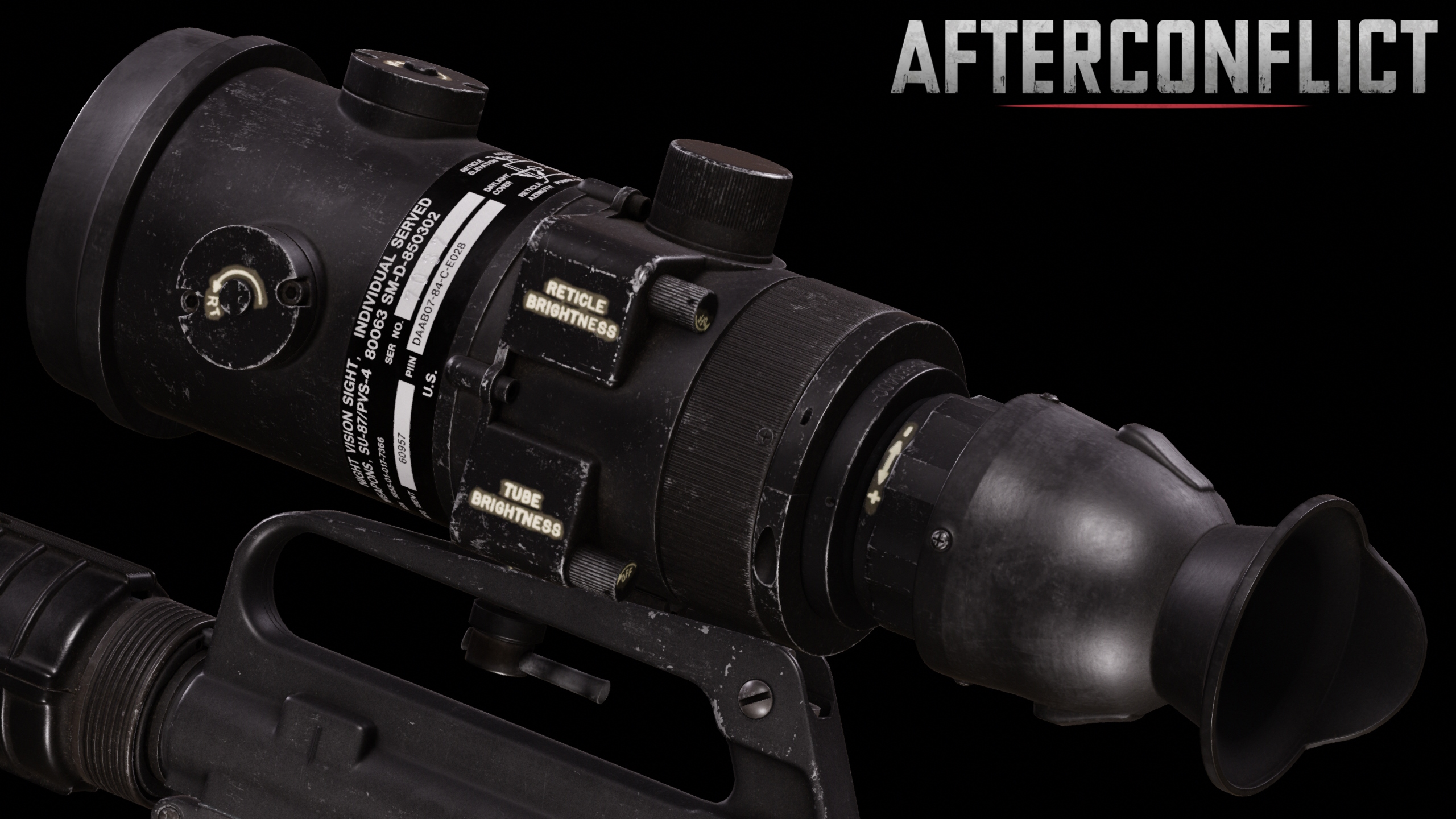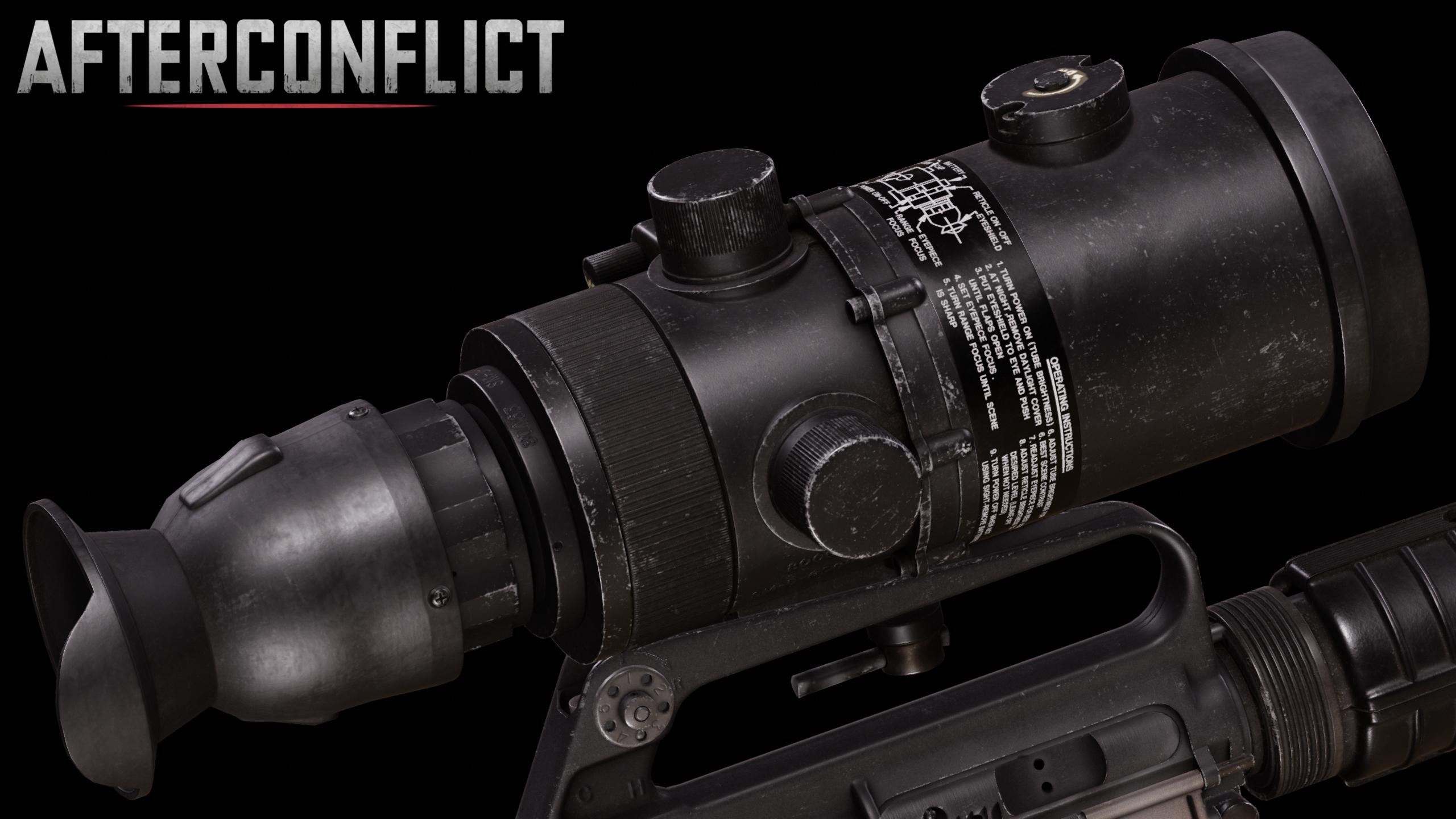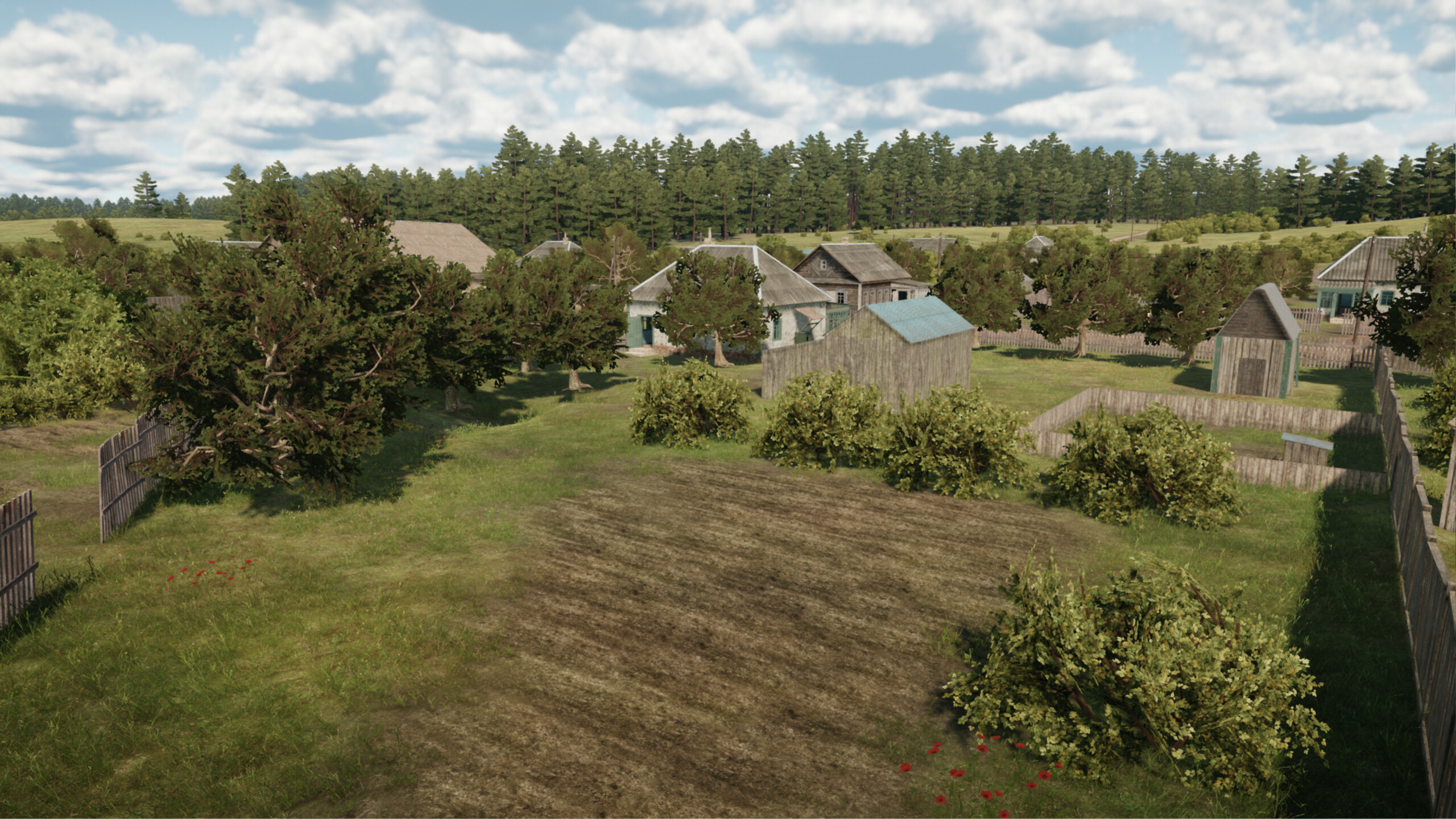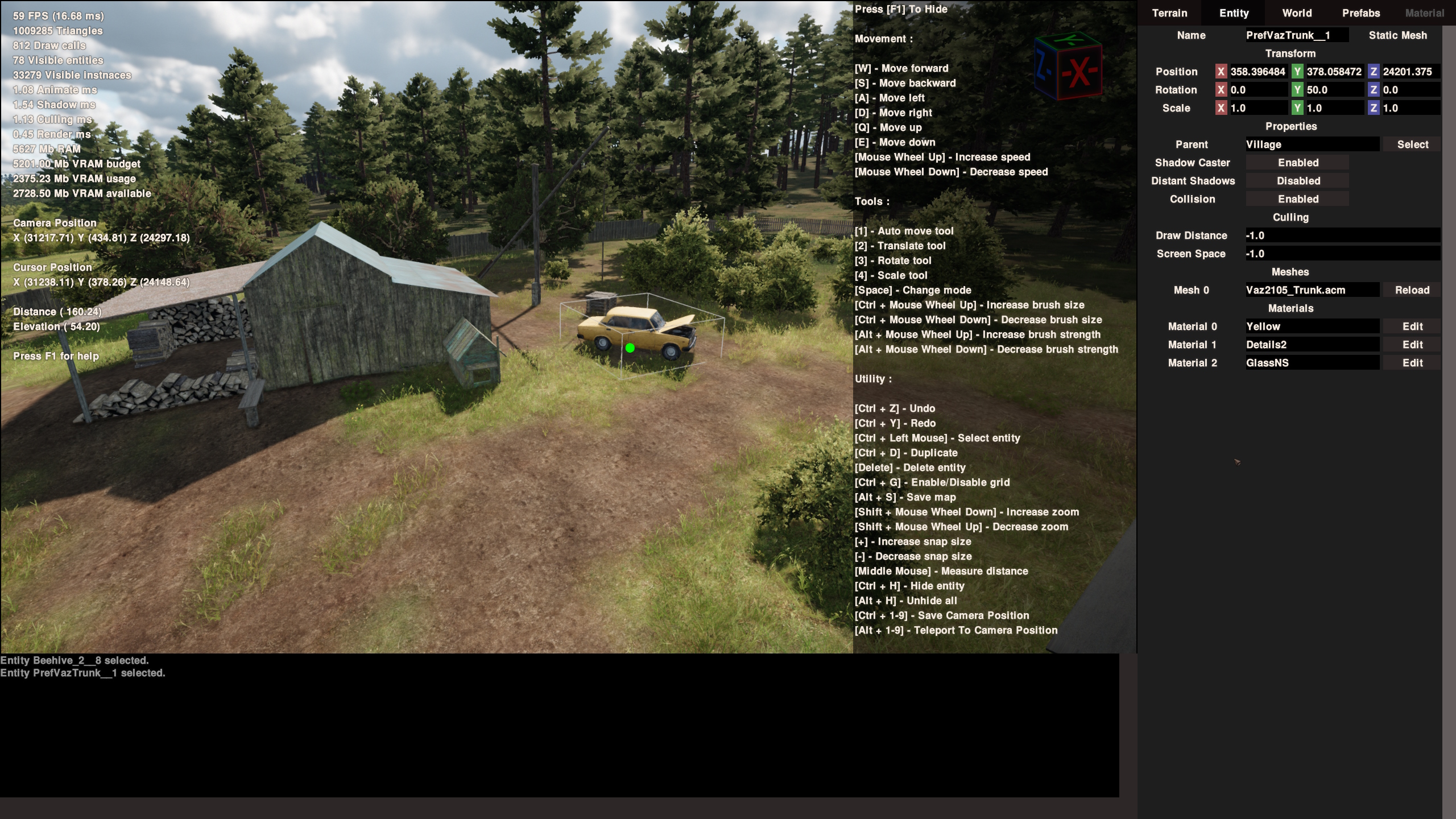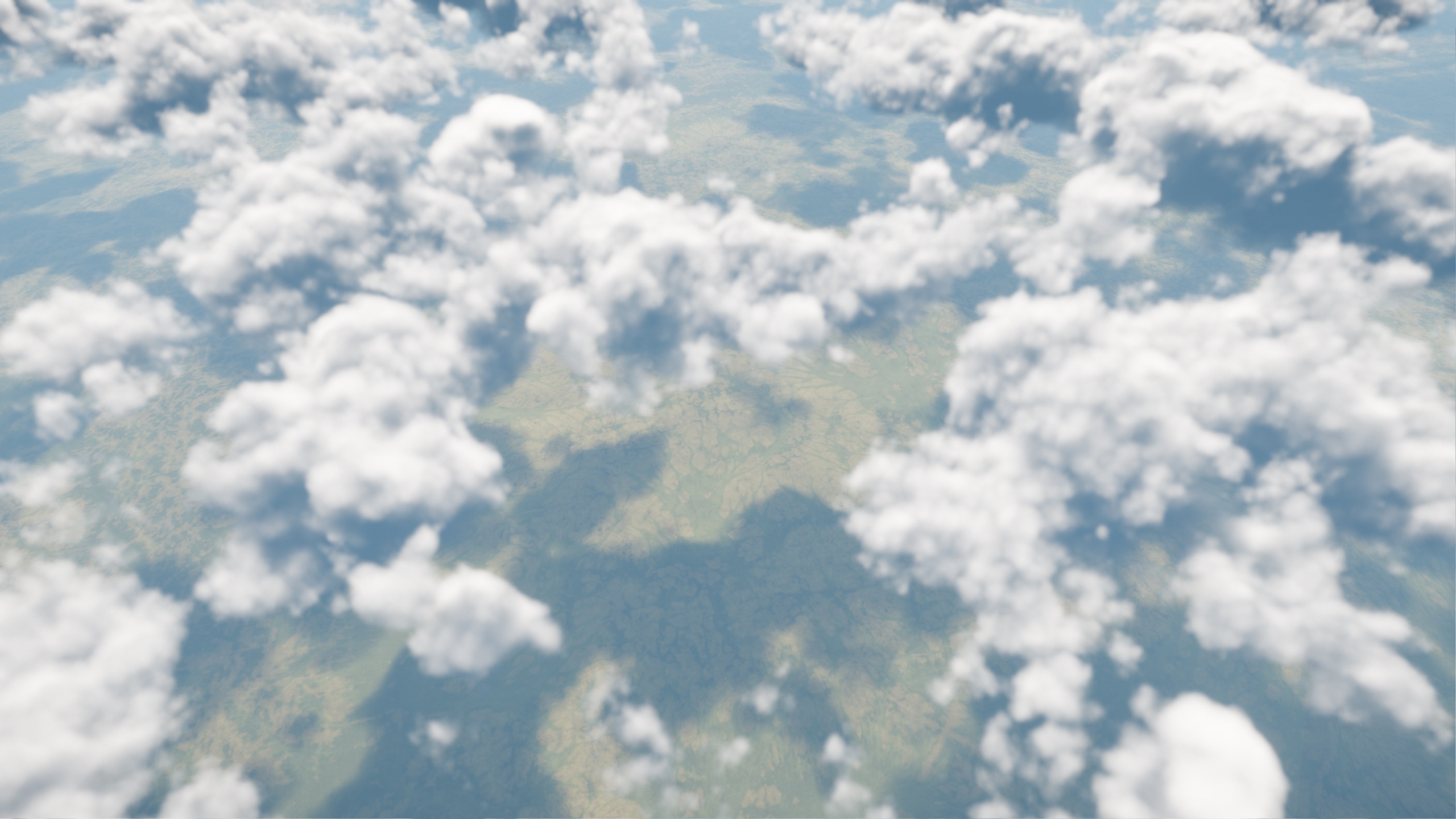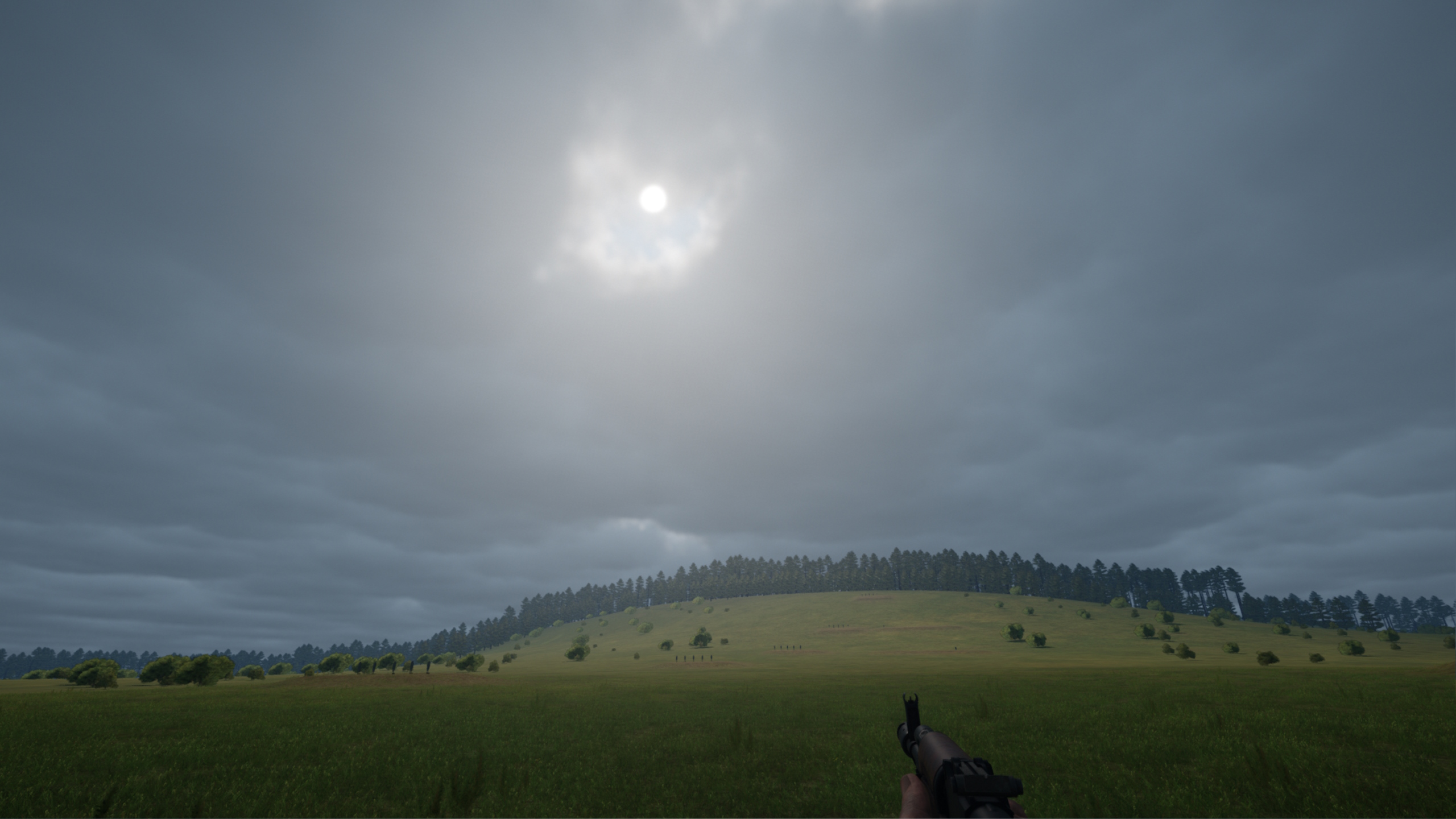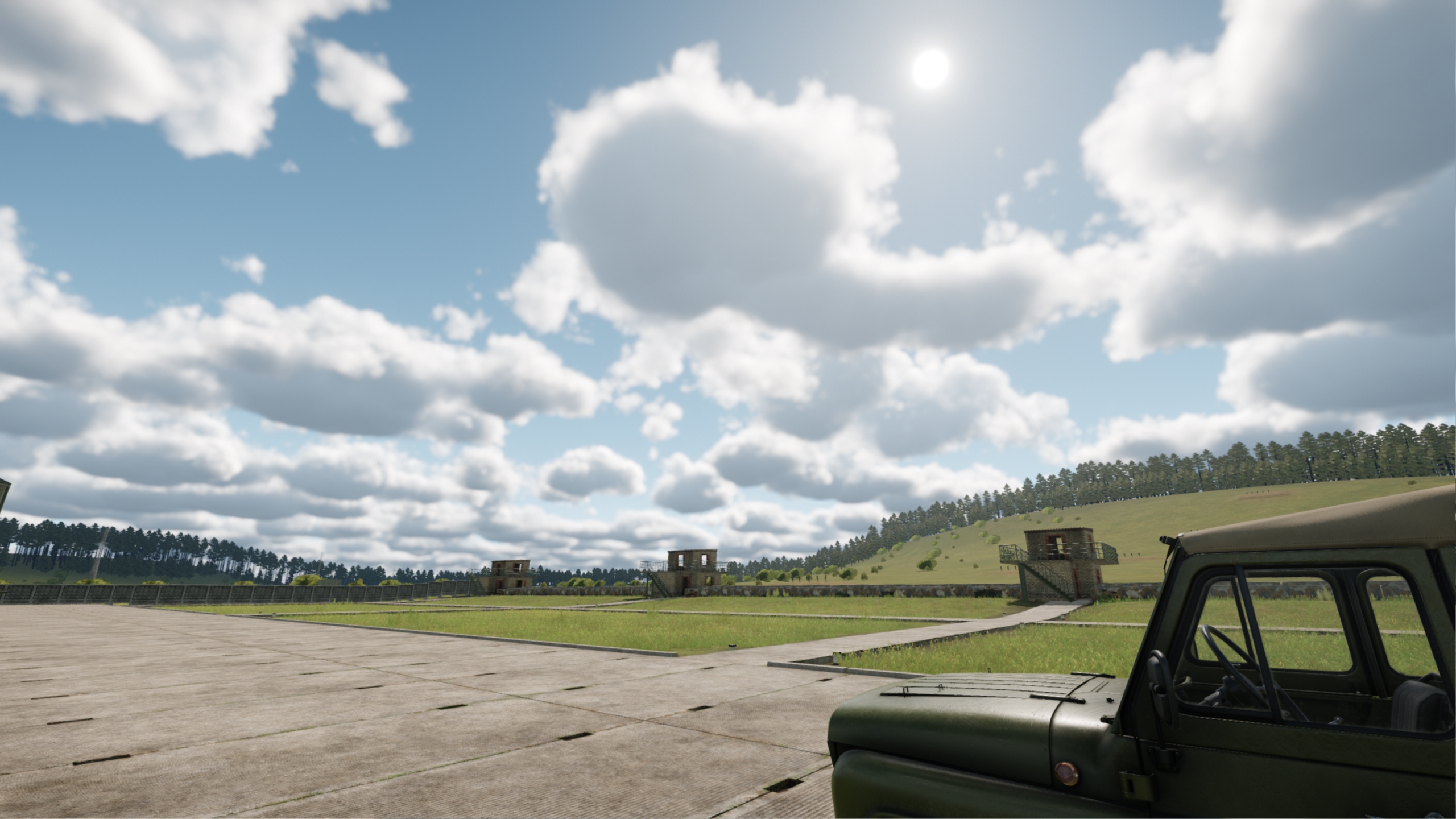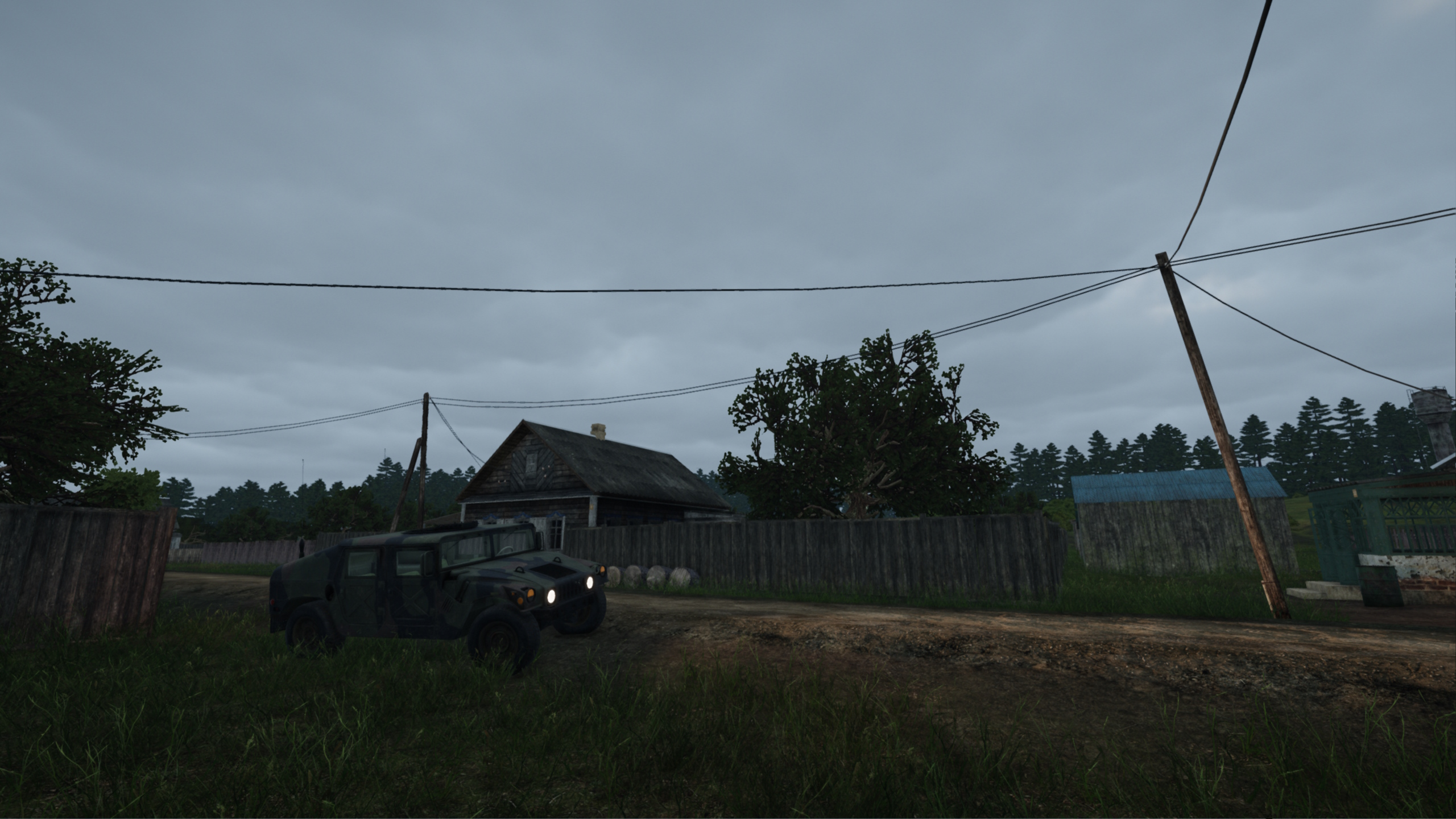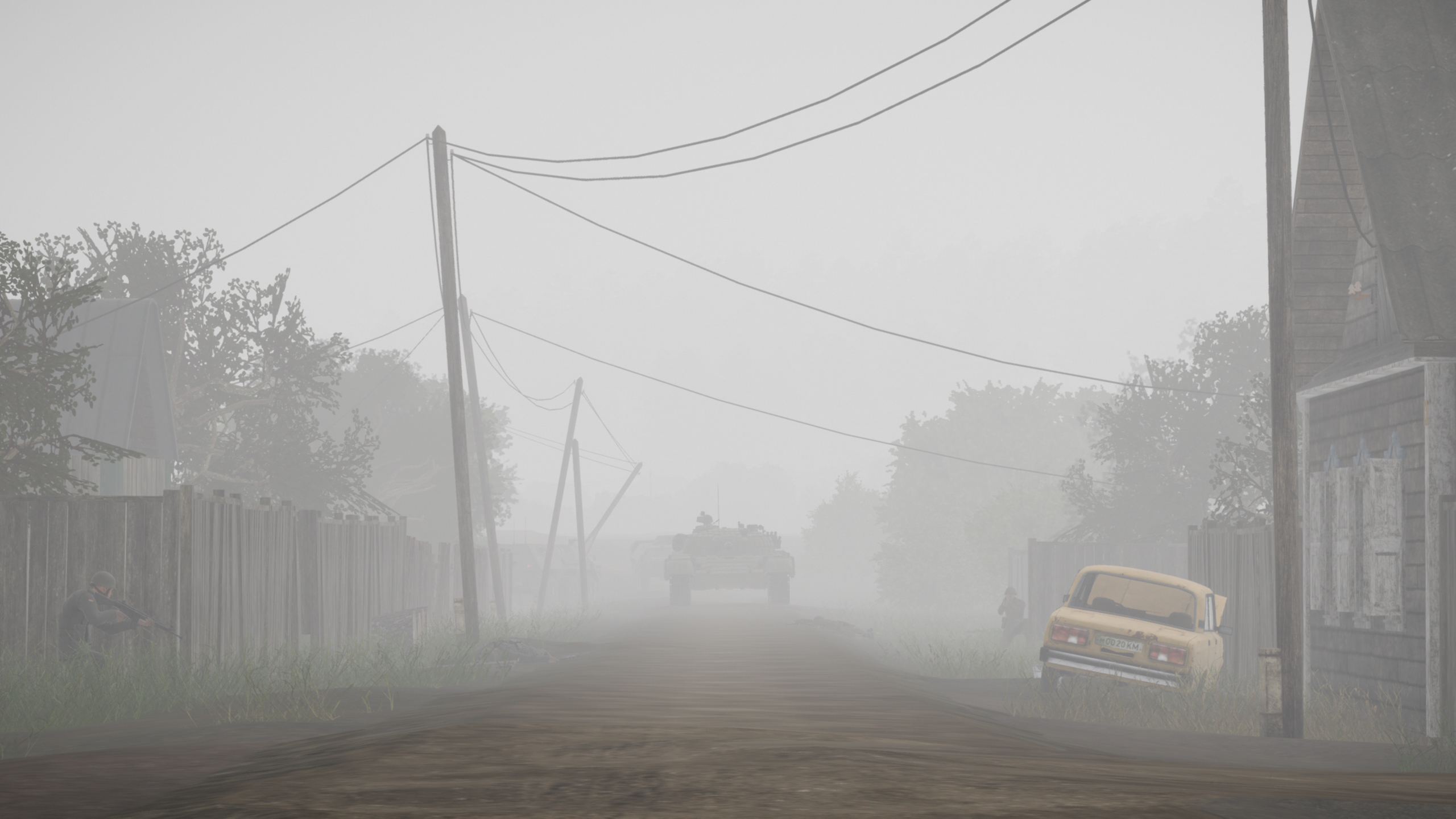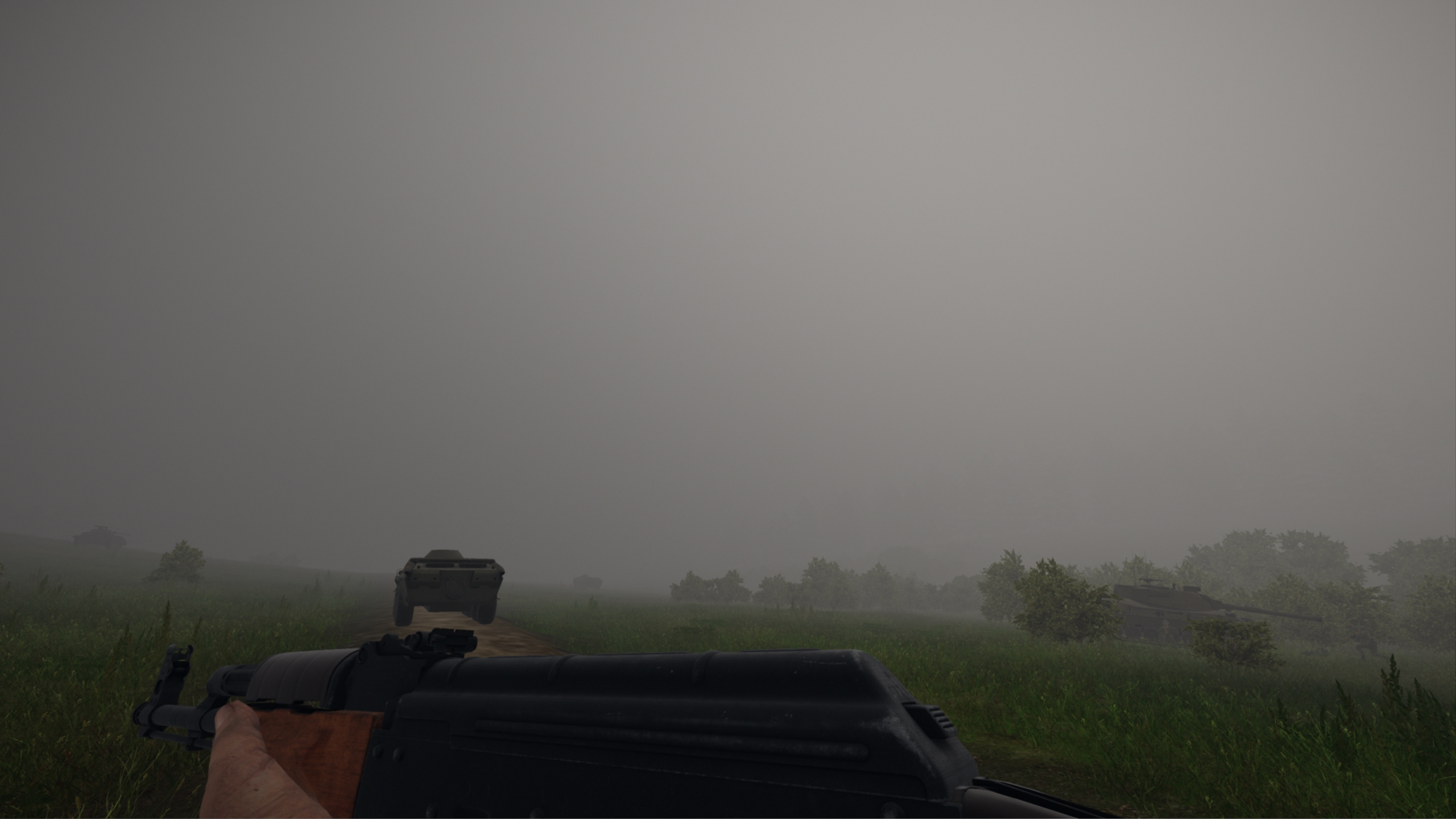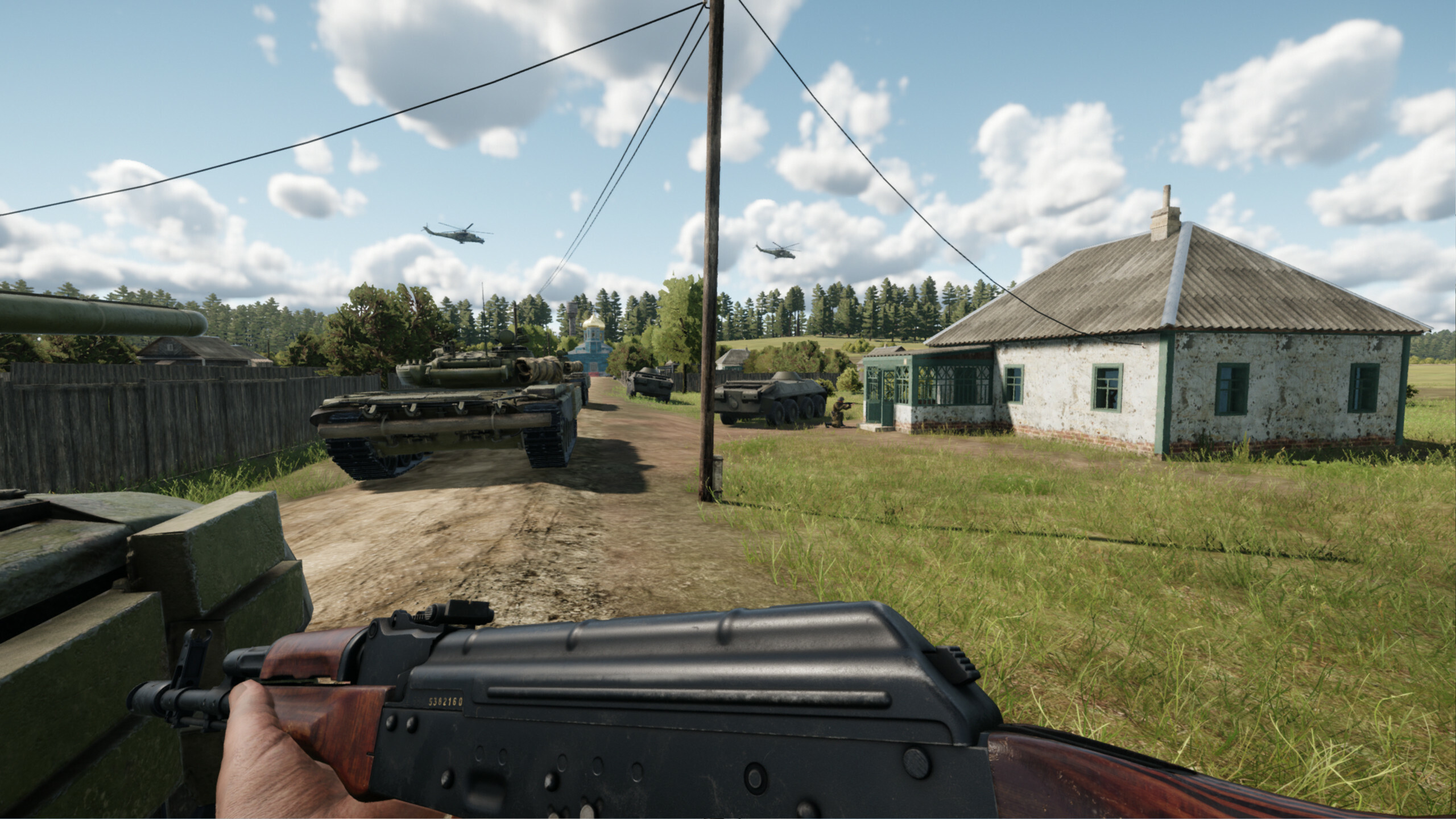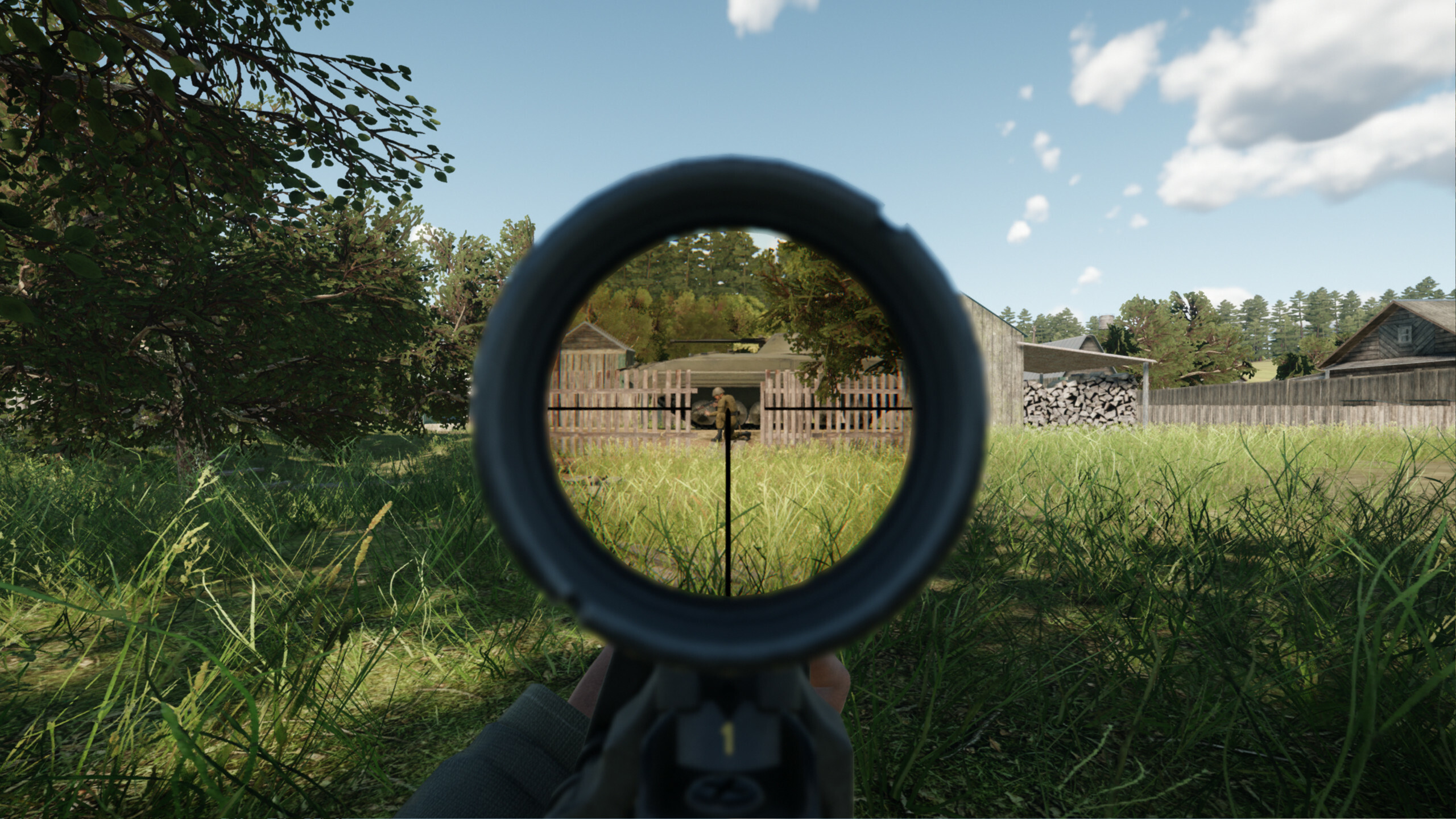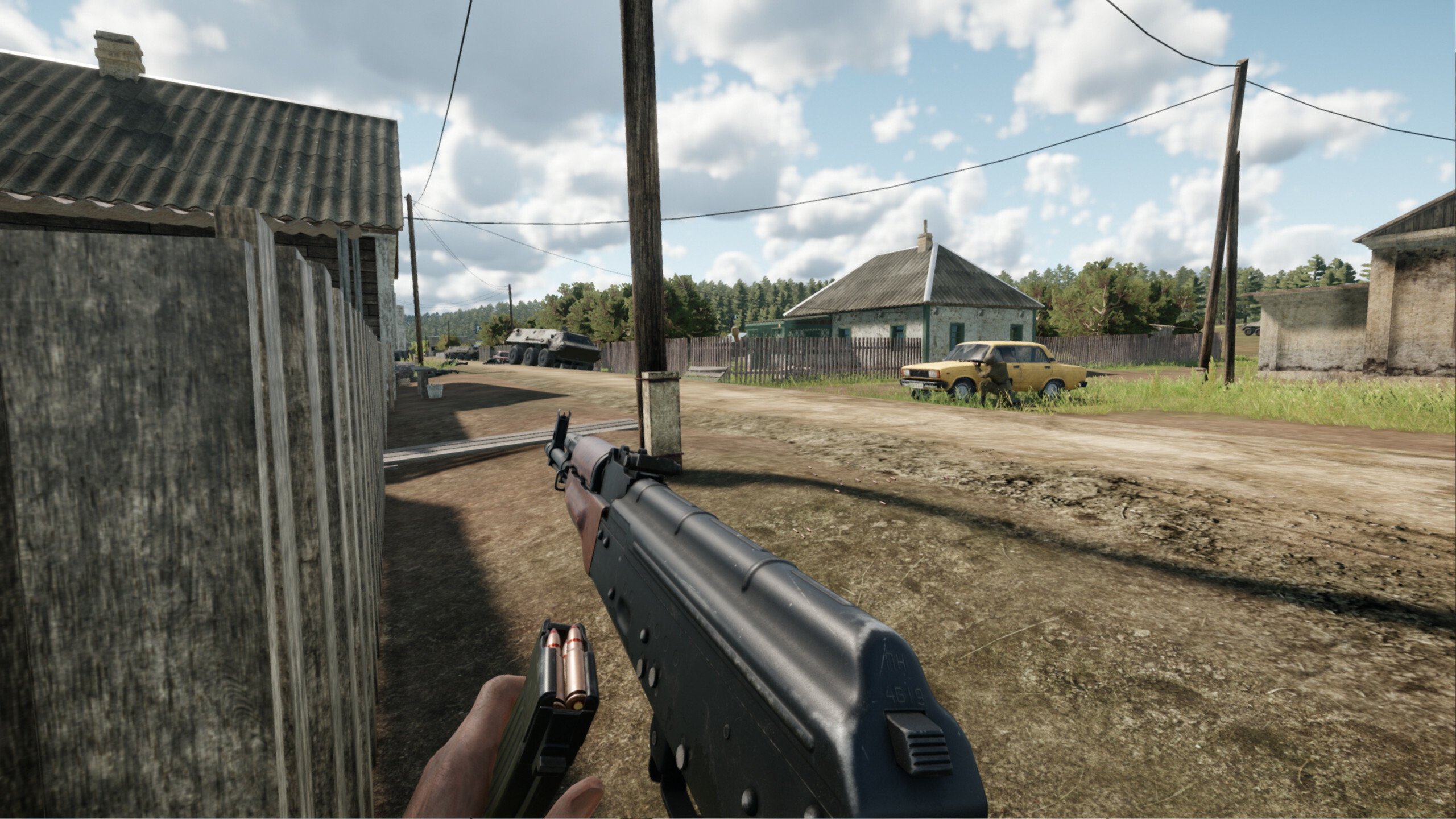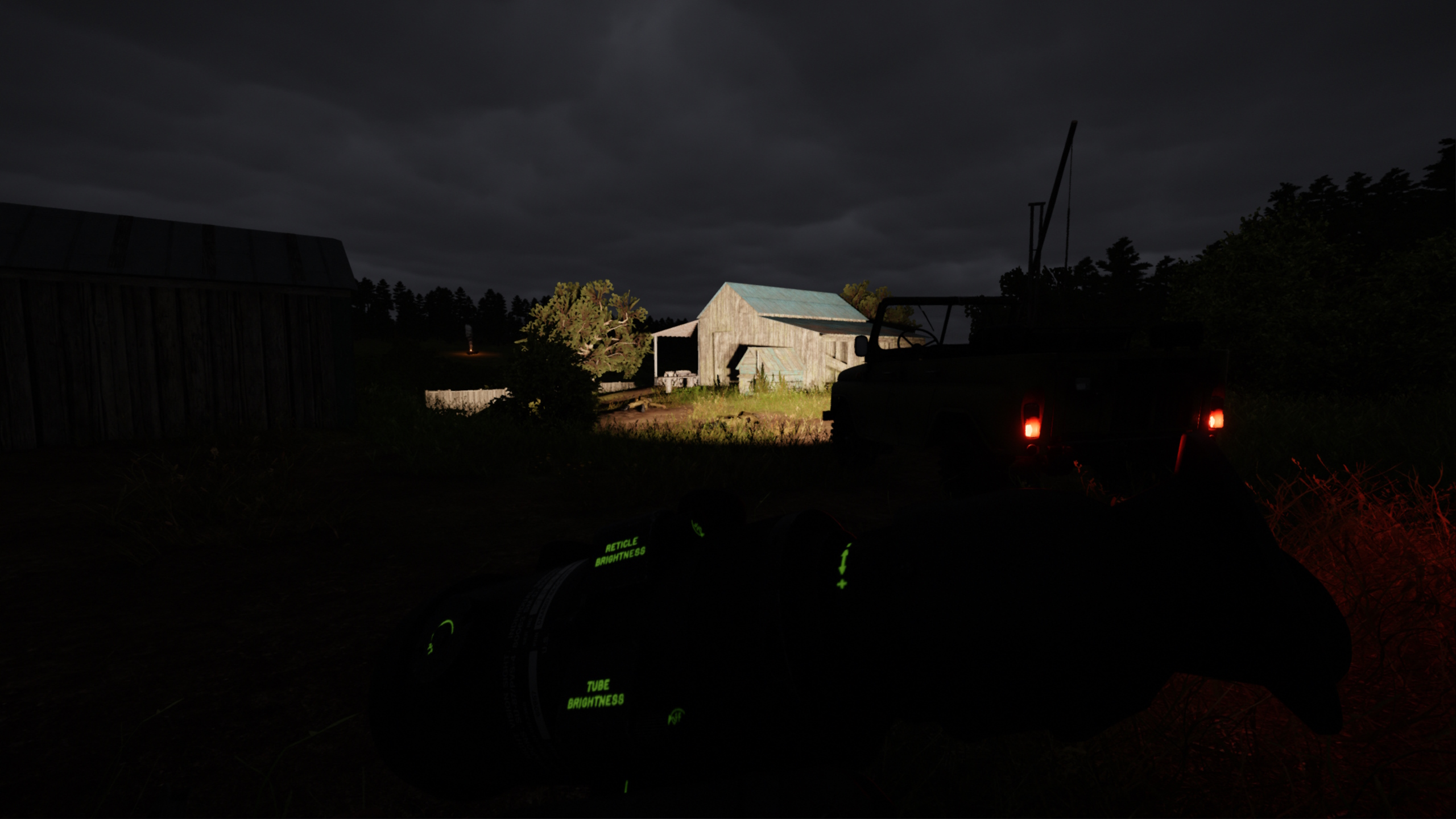Dec 31, 2023
Development Update 19
2023 is coming to a close and we figured we'd give you an end-of-year summary of what we've been doing for the last 3-or-so months since our last development update, from various different overhauls to the addition of a few new weather systems!
So, let us not delay and get right into it!
Starting hot off the heels of our previous dev update, some of you requested to see our UAZ-469 with its canvas top cover down, and we have exactly that (in a couple of different configurations) as a preview of the sorts of vehicle customisation you can expect to see in Afterconflict!
Personally I prefer the sanctity of a structure that prevents both the driver and passengers from being smushed/dismembered/both by what is effectively a very large metal brick if said metal brick inexplicably rolls over after hitting a particularly nasty pothole and careening into a ditch, but a stern commitment to looking and staying cool is still amicable.
But pivoting to rugged Soviet gear that doesn't carry with it a severe chance of death if used improperly (unless one is particularly determined), we also have a high-poly preview of our overhauled Obr. 1988 "Afghanka" uniform and SSh-68 helmet!
Only standardised as a replacement for the Obr. 1969 uniform in 1988, the Afghanka uniform was gradually rolled out during the course of the Soviet-Afghan War (hence the nickname) as a more distinctly modern upgrade to its more "traditional" predecessor, and would in short order inspire the production of the UTV cut of the East German field uniform, among other experiments in fellow Soviet satellite states.
While the Afghanka uniform was a fairly brazen interpretation of the US's Battle Dress Uniform, Soviet helmet design never went through the aramid armour renaissance as with the US PASGT system and similar among other NATO nations, so the SSh-68 remained the USSR's go-to combat helmet (along with the millions of SSh-40s and SSh-60s both in circulation and sat in storage), but despite the fact that it came about far earlier than the Afghanka uniform, our rendition of the conical helmet is of the later model, sporting an improved chinstrap.
But while grunt gear is always fun to look at, sometimes you just want to look at some more specialised equipment where the serial numbers cap out in the thousands instead of the millions, so let's jump over the Iron Curtain and look at something a bit more high-tech, shall we?
First developed in 1987, the 3rd Model M4 Muzzle Brake Suppressor (3rd Model M4 MBS) quickly became a staple among USSOCOM units (itself a newly formed command at the time) looking for what was at the time the best of the best in suppressor technology for their numerous 5.56 carbines; it was first seen by the general public when photographed on the carbines of Delta Force operators during Operation Acid Gambit in 1989, the opening act of Operation Just Cause.
The 3rd Model suppressor's finest hour would be in 1993 during Operation Gothic Serpent where one was fitted to the Model 723 M16A2 Carbine of Delta Force's Master Sergeant Gary Gordon who, alongside Sergeant First Class Randy Shughart, would famously defend the crash site of Super Six-Four against insurmountable odds in what would prove to be a last stand, a feat that would posthumously earn them both the Medal of Honor.
During the engagement, Gordon's carbine was passed to Chief Warrant Officer Mike Durant, the pilot of Super Six-Four and sole American survivor of the incident, before their position was overrun and he was captured by Somali forces.
Our rendition of it as seen here is mounted on an M16A1 Carbine (Model 653), which is sure to provide those playing as US special operations forces a certain level of discretion while picking off targets.
But for those of you that who wish to stay out of day-time raids in the 100+°F afternoon Mogadishu heat, a more subtle option is to operate at night, and a prime option for US troops doing so to get an edge over the opposition is the AN/PVS-4 Night Vision Sight, the US military's go-to small arms night vision scope since the late 70s.
Though it's obviously built for the night, in a pinch it can be used during the daytime with the addition of its daylight cover, which we have a demonstration of here, though it does come at the disadvantage of having a reduced, triangular field of view.
Ironically, due to their design the Soviet NSPU (1PN34) and its successors do not have the same FOV restriction as the PVS-4, though do suffer from a chronic fisheye effect.
On the topic of the NSPU however, the NSPU's adjustment dials are now animated!
In general, we do not intend on understating the gulf between NATO and Warsaw Pact night vision technology in Afterconflict, as in reality it will simply be another element of the battlefield to strategise around while chasing victory, so as a point of reference, here is our comparison between the Soviet PNV-57E and newly added American AN/PVS-5B Night Vision Goggles, each with their own various quirks.
And finishing off today's coverage of Soviet gear we'll be using one of the USSR's more underwhelming military creations, the RGD-5 grenade, to demonstrate our new addition of explosive shockwaves affecting vegetation that they come into contact with!
Relating to making our environments more lively, we've been overhauling our Village map in various different ways, from adding detail to the primary village itself, to expanding it outwards and adding surrounding settlements to bring it closer to the sort of scale you can expect to see in Afterconflict as a whole!
All of these adjustments along with the map itself have been created using our ever-evolving in-game map editor, meaning that without the installation of any external SDKs you'll be able to make maps and mods for Afterconflict with the same tools that we do!
To frame all of our various locales, we've also been implementing various overhauls to our weather systems, primarily relating to clouds.
A change that's now virtually constantly present is cloud shadows, from the occasional dimming of the ground due to a singular, whimsical cloud obstructing the ground for a fleeting moment, to the inverse of a single pillar of light penetrating an otherwise drab, overcast day, they've added a lot of character to the in-game world!
Though people probably don't usually think much on these things (because they're normal), fog is effectively just clouds at a low altitude, and as a result of the work on further improving our clouds, we've also implemented raymarched volumetric fog, which, aside from simply looking pretty cool and foreboding, is sure to provide a lot of tactical opportunities to players that relish in close-range ambushes.
In addition, said clouds and fog also include Mie Scattering, which, in layman's terms, means clouds (including fog) now scatter light from the Sun as it passes through them, resulting in more tonality!
Over time we'll be further expanding on our weather systems to encompass various other weather conditions, so be ready for it when it arrives...
To finish things off, as the older ones were getting a bit long in the tooth with our more recent advancements we've updated our Store page screenshots that you can see below.

While things still haven't always easy-going this year, given the circumstances, we still have our dogged determination to make Afterconflict the best that it can be, and to keep up our momentum going into 2024!
To that end, we'll be focusing on even more overhauls to various aspects of Afterconflict that we hope will have even more sweeping improvements to the game as a whole, so keep an eye out for it and you'll likely see them very soon!
And, as ever:
We Hope You Had a Very Merry Christmas, and We Wish You a Happy New Year!
On our Discord server we discuss everything from the game and Cold War history to posting photos of hedgehogs!
We hope you enjoyed reading this development update, if you wish to keep up to date with all Afterconflict updates, be sure to follow our X (Twitter) feed too.
As Ever: Stay Tuned!

